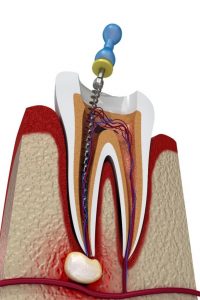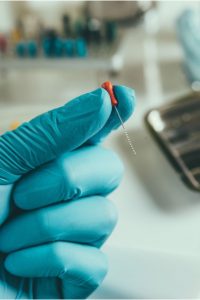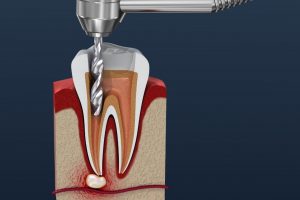A “root canal” is not a treatment, but part of a tooth. It is the hollow section of a tooth that contains the nerve tissue, blood vessels, and other cells, also known as the pulp.
Root canal treatment, also known as endodontic therapy is a treatment used in case of an infection inside the tooth, in the pulp.
Inside the crown and the root, or the root canal, is the pulp. The pulp nourishes the tooth and provides moisture to the surrounding material. The nerves in the pulp can sense hot and cold temperatures as pain.
The crown of the tooth — the part you can see above your gums — can remain intact even if the pulp is dead. Removing injured or infected pulp is the best way to preserve the structure of the tooth. Common causes of damage to the pulp include:
- deep decay due to an untreated cavity
- multiple dental procedures on the same tooth
- a chip or crack in the tooth
- an injury to the tooth (you might injure a tooth if you get hit in the mouth; the pulp can still be damaged even if the injury doesn’t crack the tooth)

The steps of root canal treatment
Root canal therapy is done in three steps, and it takes between one and three sessions to complete.
Firstly the root canal must be cleaned from everything that is inside of it. With the patient under local anesthesia, the dentist makes a small access hole on the surface of the tooth and removes the diseased and dead pulp tissue with very small files.

Next, the dentist cleans, shapes and decontaminates the hollow area, using tiny files and irrigation solutions. Then, the tooth is filled with a rubber-like material, using an adhesive cement to seal the canals completely.
During the root canal therapy, the tooth is dying. The patient will no longer feel any pain in that tooth because the nerve tissue has been removed, and the infection has been eliminated.
The tooth will now be more fragile than it was before. This supply is adequate, but in time, the tooth will become more brittle, so we add a crown and a pin to offer protection as a final step.
However, if the tooth cannot be saved and needs to be removed, the next best option is an implant.
Of course, saving the natural tooth is best, if possible, because nothing functions as well as a natural tooth.

